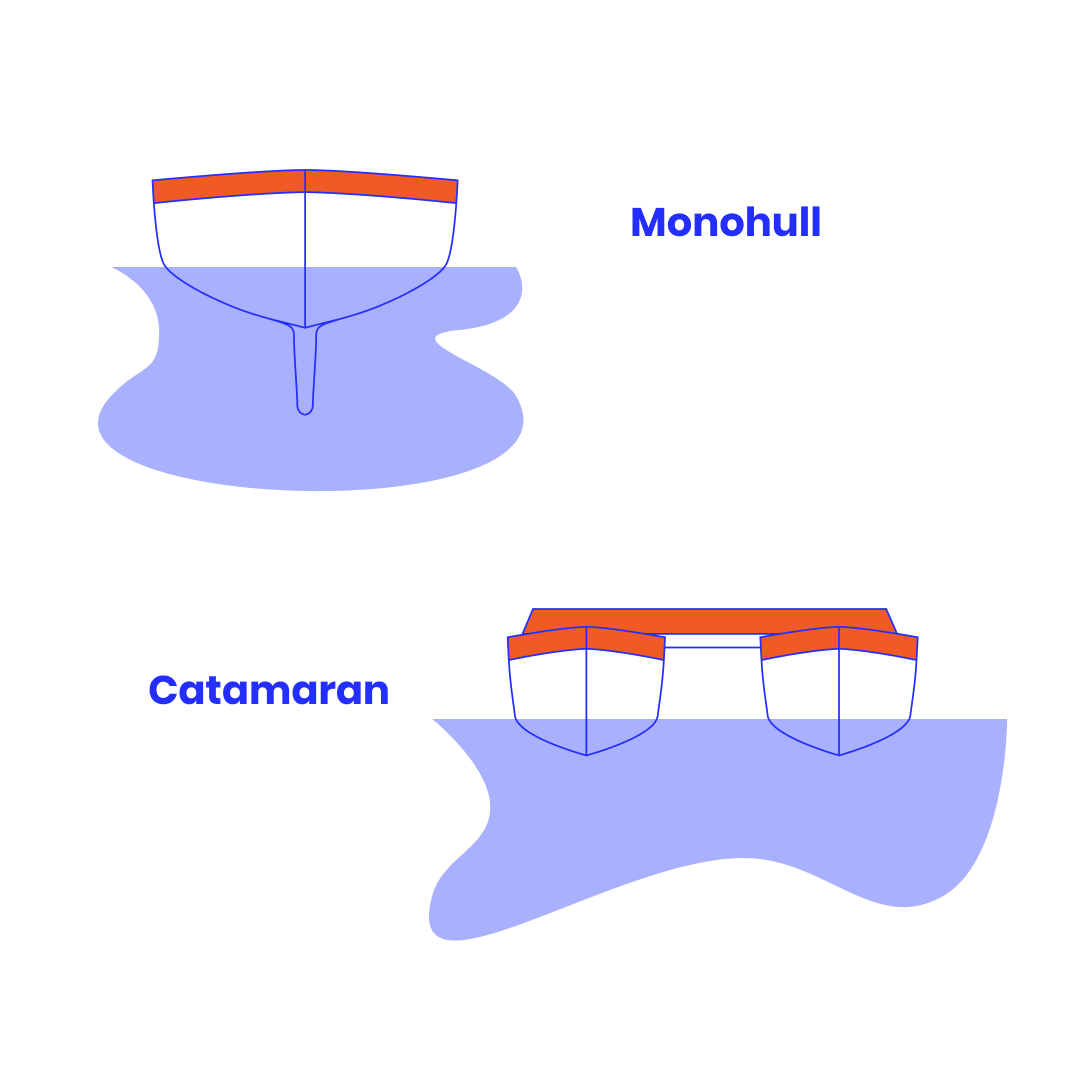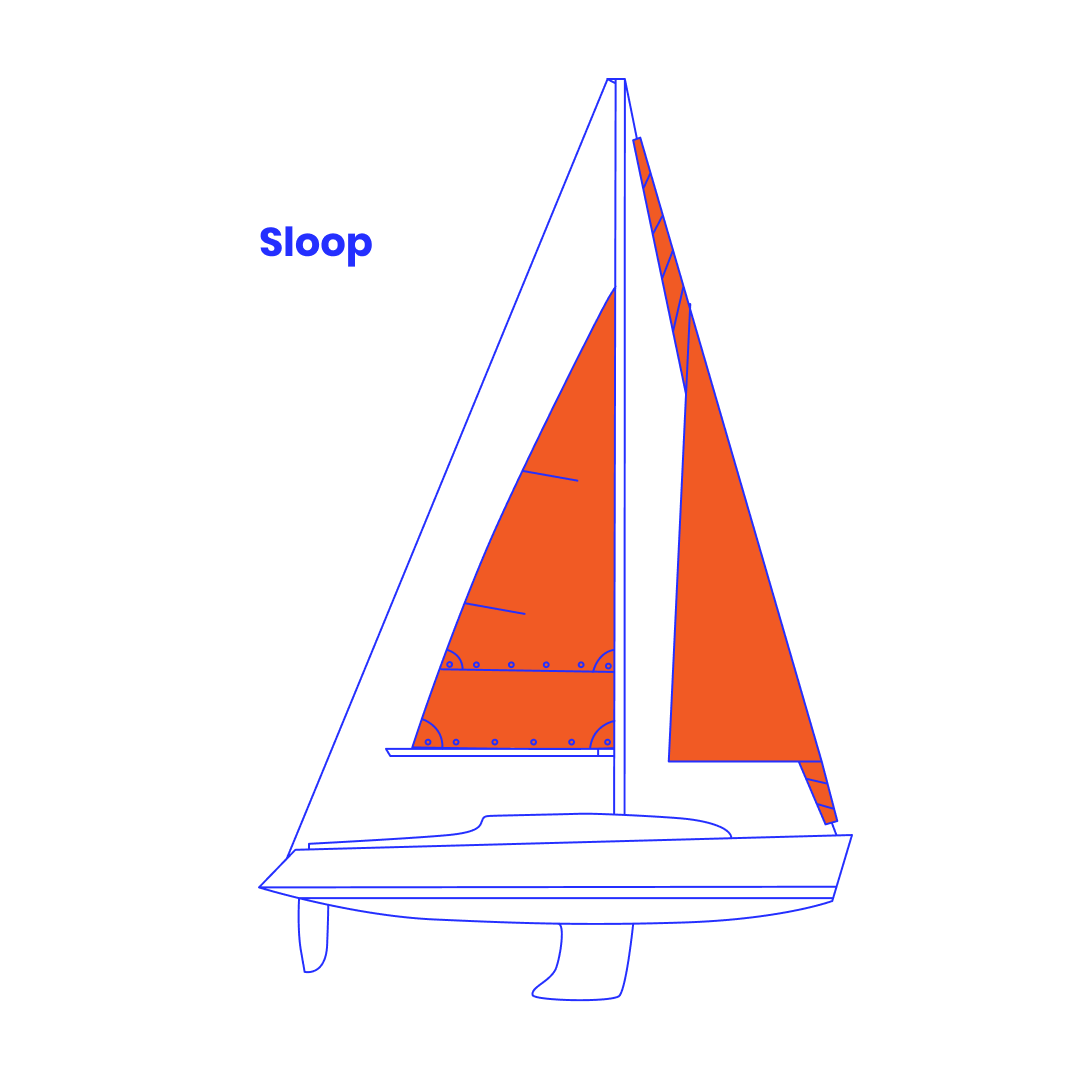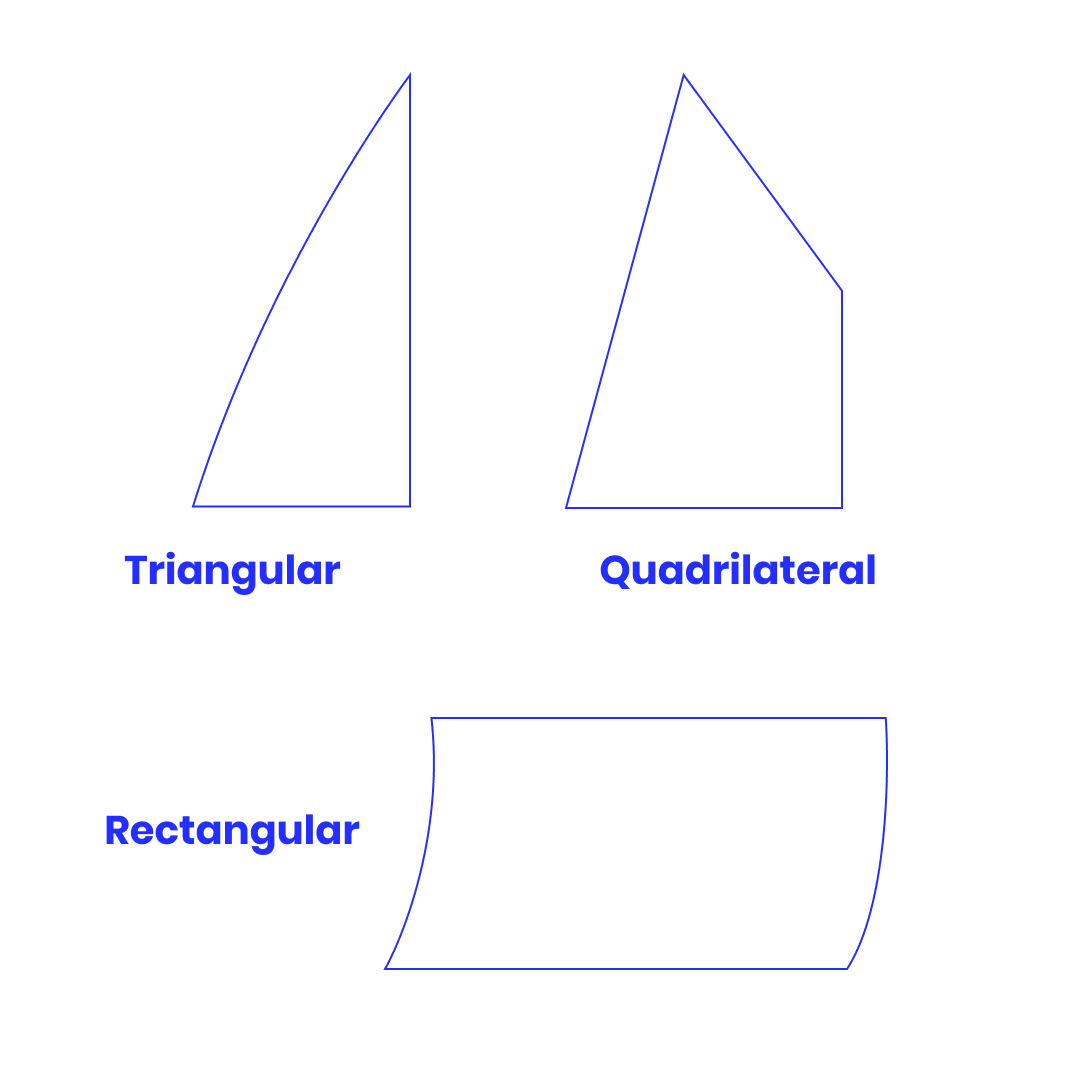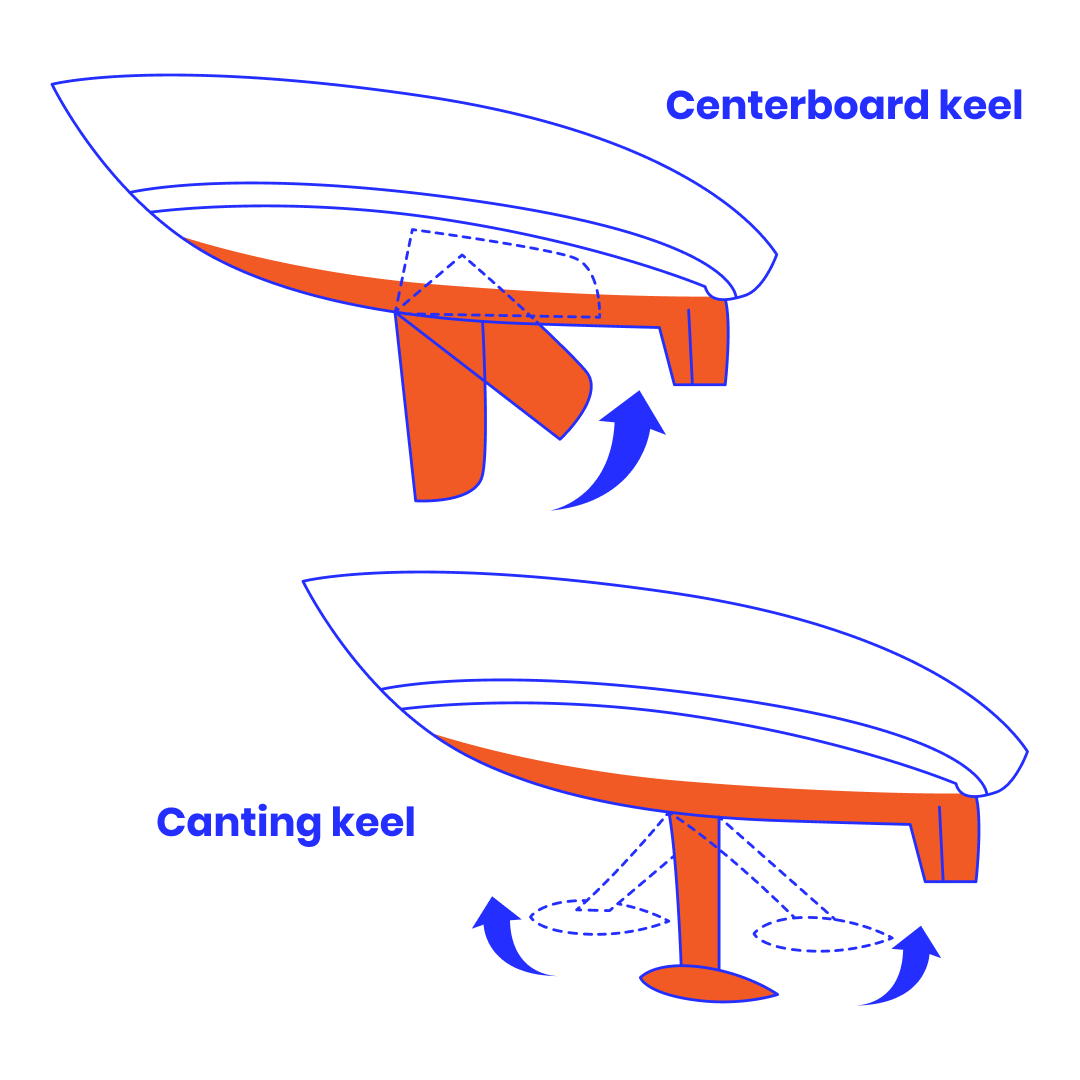Sailing at Broad Reach: Beginner’s Essentials
Whether you’re new to sailing or looking to sharpen your skills, this how-to guide with helpful illustrations has you covered, helping you build a strong foundation for sailing at Broad Reach.
Sailboats come in a variety of options, each designed to meet specific needs and preferences. This guide will provide clarity and insight into the unique features of each sailboat type, allowing you to explore the basic categories of sailboats.
The hull is the body of a sailboat. When categorizing sailboats by their hull type, we encounter two primary designs: Monohull and Catamaran.
Sailboats float and don't sink because of the density of the water and the concept of buoyancy. Buoyancy is a force that pushes an object upward when it's immersed in water. When a boat is placed in the water, it displaces a volume of water equal to its own weight.
The fact that the boat is hollow inside makes it less dense than the water it's in. So, the sailboat doesn't sink because it's designed to be less dense than the water and displaces enough water to counteract its own weight, even with passengers and cargo on board.
In simple terms, a catamaran is a boat with two hulls connected by one surface (deck).

One of the key differences among sailboats is the types of sails they use. This classification is based on variations in the number and placement of masts and sails.
• Catboat: A catboat is a sailboat featuring a single sail mounted on a single mast positioned at the very front of the boat. These boats are well-suited for coastal sailing and are frequently employed for training beginners.
• Sloop: A sloop is a sailboat with a single mast positioned in the middle of the boat, and is equipped with two triangular sails—one positioned in front of the mast (headsail) and the other behind it (mainsail). This sailboat configuration is the most common.
• Cutter: A cutter is a sailboat characterized by a single mainsail and at least two (often three) headsails. Moreover, a cutter's headsails are always triangular, while its mainsail can be either triangular or quadrangular, so the type of rigging for its mainsail may vary (more on this below).
• Ketch: A ketch is defined by having two masts. The second mast (usually shorter) is positioned in the rear of the boat, and is known as the aft-mast. This configuration allows a ketch to accommodate two headsails and two mainsails.
• Schooner: Schooners have at least two masts, and often three or more. They usually carry square sails, which are quadrangular in shape and set perpendicular to the mast, so the key difference lies in its rigging configuration.
Continue reading below for more details on Rigging types.

Rigging refers to the system of cables and lines (ropes) fastened to the mast and sails. Different shapes of sails require different types of rigging, allowing us to classify the above sailboat types by their rigging.
• Bermuda Rig: The Bermuda rig is designed to control the triangular mainsail. Sailboats equipped with triangular mainsails can be classified as Bermuda sloops, Bermuda ketches, Bermuda cutters, or even Bermuda schooners.
• Gaff Rig: The gaff rig is used to control a quadrilateral sail with its top adjusted by a special pole known as the gaff. Sailboats with this type of mainsail can be classified as Gaff cutters, Gaff ketches, Gaff schooners, etc. Gaff sails also include a triangular topsail above the gaff.
• Square Rig: A square rig features sails carried on horizontal poles perpendicular (or at a square angle) to the mast. Square rig sails are typically quadrangular (often rectangular or trapezoidal), and are arranged one above the other.

The keel is a longitudinal structural component of the sailboat and the weighted fin providing stability is also known as the keel. Sailboats are also categorized by their keel types:
• Fin Keel: The fin keel is the very common type of weighted fin securely attached to the boat's centerline. It may include a bulb at the end to increase the boat's weight at the bottom or a wing at the end for enhanced directional stability.
• Full Keel: The full keel is the heaviest keel that runs from the boat's front to back. It provides excellent resistance to drifting but can negatively affect the boat's speed. There is also a modified full keel that is about a third shorter on the front side.
• Bilge Keel: The bilge keel refers to the two keels that are located on the boat's bilge (hull's bottom) both on the left and right sides. They enhance stability and help keep the boat upright even when it runs aground at low tide.
• Centerboard Keel: The centerboard keel is hinged at the front side, allowing its lower end to be lifted into a dedicated trunk. This feature allows the boat to approach shallow waters, however, it's not suitable for high-sea due to reduced stability.
• Canting Keel: The canting keel has a unique ability to pivot left and right, enabling the lower end to tilt using a hydraulic mechanism. When the sails cause the boat to tilt to one side, the canting keel can be tilted in the opposite direction, shifting the bulb ballast and providing the necessary righting moment.
So this is how you can classify all sailing vessels.

In this guide we've explored the classification of sailboat types, demystifying the nautical terminology and providing clarity for both novice and experienced sailors. We hope this guide serves as a valuable resource for your sailing pursuits. If you want to continue your education, get a free Yapp Sailing Course in our app. Bon voyage and fair winds!
Receive email notifications whenever we publish new and exciting content, stay informed and inspired!
Learning to sail has never been this interactive and accessible. Explore our engaging sailing course today, it's free and fun! The mobile app is available on both iOS and Android
Receive email notifications whenever we publish new and exciting content, stay informed and inspired!